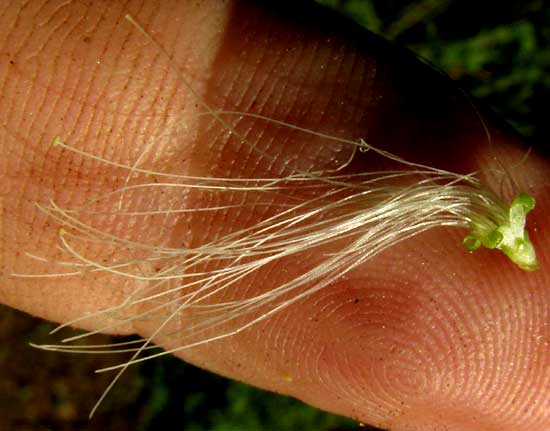Excerpts from Jim Conrad's
Naturalist Newsletter
from the December 6, 2015 Newsletter issued from Hacienda Chichen Resort beside Chichén Itzá Ruins, central Yucatán, MÉXICO
ESCOBILLA FRUITING
Groping toward a gravel road's sunlight, a slender branch bearing twice-compound leaves emerged from the dense forest wall bearing a six-inch long (15cm), legume-type fruit, as shown below:
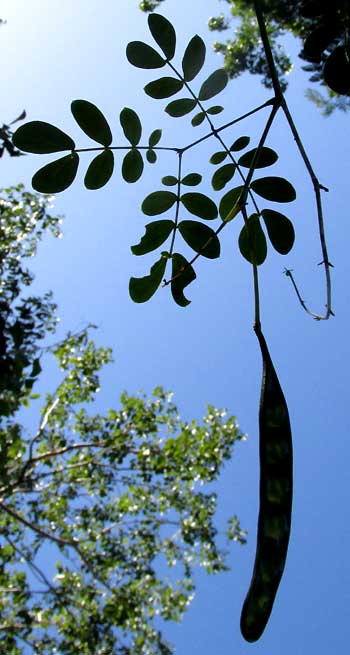
The legume was unusual in that not only did it narrow at its base into a slender stem, but also this stem itself was attached to another fairly long stem. Clearly the plant "wanted" its legume to extend beyond its leaves, and maybe dangle on branches which, at least along the road, dangled from tall trees. Below, in better light you can see that the legume is fairly unusual looking:
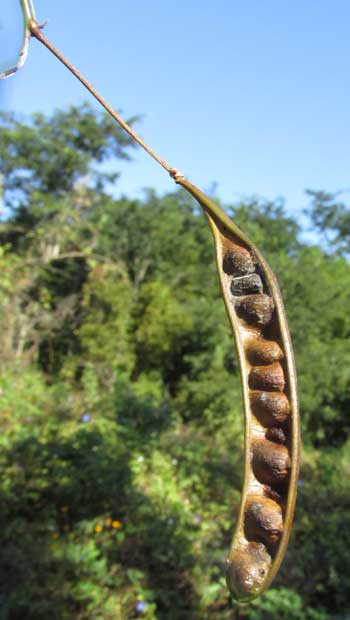
Noticed how the beans inside the pod sometimes are separated from one another, and that the pod's margins are conspicuously thickened. At the above picture's top, left corner, you can also see a short, curved back spine.
Despite not having flowers, the pod and leaves were so distinctive that it was easy to figure out that here we have what's often called in Spanish Escobilla, meaning "little broom." It's ZAPOTECA FORMOSA, a member of the Bean Family, as its legumes, beans and acacia-like, twice-compound leaves indicate. No flowers are visible at this season. I read that the fruits are "explosive," in that when the ripe legume dries out, great outward stress forms tugging the walls apart, but the legume's thick margins keep the walls together until the stress is very great, and the walls snap open, throwing beans in all directions.
Escobilla is fairly common in weedy, disturbed woods, especially those in somewhat arid climates, all the way from Arizona in the US and northern Mexico to Argentina in South America. With such a large distribution it's fragmented into at least six recognizable subspecies.
This is another of those species that is basically a tree, but it likes to lean on other vegetation and often tends toward being a vine. The way it dangled from the side of the roadcut through the forest, as first I thought it was a vine. Its curved, short spines help the plant snag on stronger limbs. In our forests here we have several such leaning and clambering tree species, and I've often wondered whether this may be an adaptation to our hurricanes. When strong winds hit our area, Escobilla will be one tree that won't snap. It'll bend, and if all the other trees fall, it'll grow over them.
from the September 14, 2018 Newsletter issued from Rancho Regenesis in the woods ±4kms west of Ek Balam Ruins; elevation ~40m (~130 ft), N~20.876°, W~88.170°; central Yucatán, MÉXICO
ESCOBILLA FLOWERING
This week, Escobilla is flowering, as shown below:
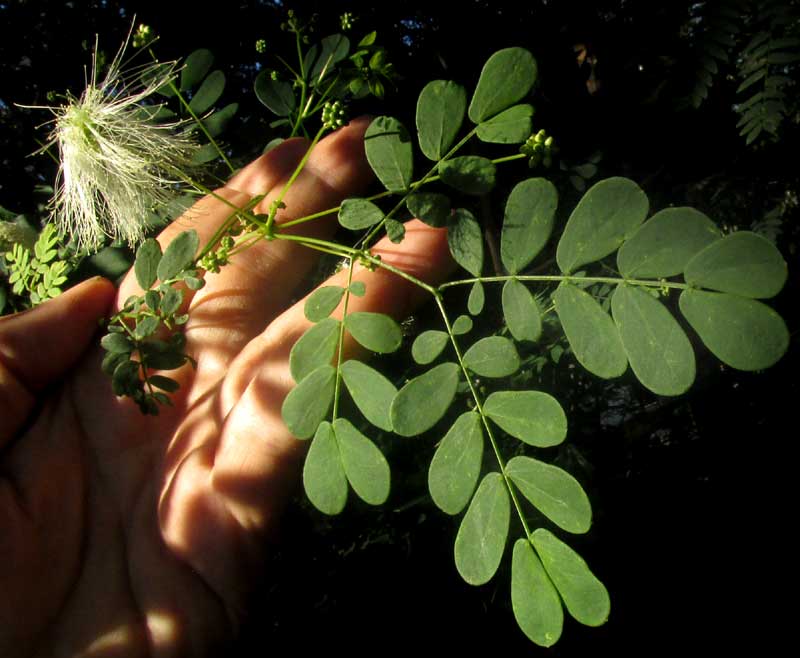
The flowers surprise me, because the Bean Family is divided into three subfamilies, and Escobilla's twice-compound leaves with moderate-size, round-tipped leaflets had led me to guess that the species is a member of the Caesalpinia Subfamily. However, the flowers grouped in bunches to form a ±spherical head is typical of the Mimosa Subfamily. In plant classification, flower features nearly always are more important than vegetative ones, and that holds true here, because Escobilla belongs to the Mimosa/ Acacia Subfamily. A closer look at the flowering head is shown below:
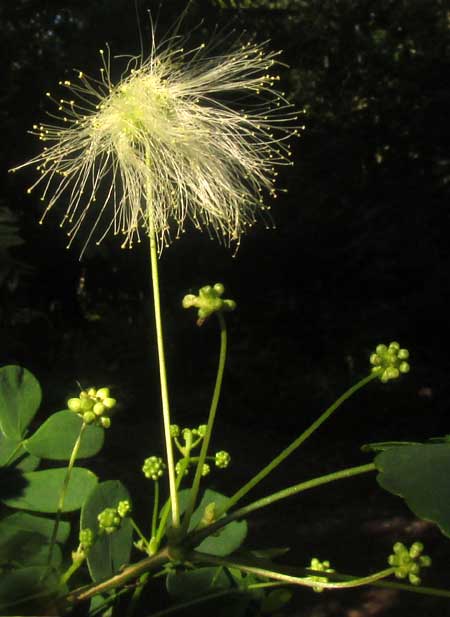
There you can see that flowering has just begun, because of the numerous clusters of unopened flower buds at the tips of flowering-head stems, or peduncles. The fully developed flowering head's fuzziness consists of very many long, slender stamens. Below, a single flower is removed from the head showsing that each blossom produces many more than ten stamens:
